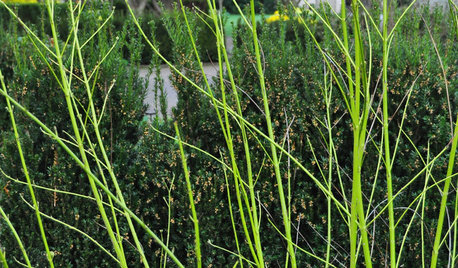corn ear worms
dawnrenee
14 years ago
Related Stories

SUMMER FRUITS AND VEGETABLESHow to Grow Your Own Fresh, Sweet Corn
Here's how to plant and care for your own mini cornfield
Full Story
Wake Up Your Garden With Lime-Colored Plants
A sprinkle of bright lime foliage can invigorate darker green garden areas and enliven shady spots all around your landscape
Full Story
GARDENING FOR BUTTERFLIESGarden for Wildlife to Reap Rich Rewards
When you plant with animals and insects in mind, you make gardening easier, the planet healthier and yourself more present
Full Story
Guest Picks: Ghoulish Goods for a Spooky House
No friendly ghosts here. These creepy Halloween decorations and eerie accessories play on the dark side
Full Story
HOLIDAYS36 Stylish and Spooky Halloween Decorating Ideas
Customize your Halloween decor with pumpkin topiaries, glam mantels, glowing tabletops, wreaths and more
Full Story
EDIBLE GARDENSHow to Grow Your Own Sweet Summer Crops
This guide will help any gardener get started on growing the freshest warm-season veggies and berries for summer
Full Story
GARDENING FOR BUTTERFLIESGardening for the Bees, and Why It’s a Good Thing
When you discover how hard bees work for our food supply, you may never garden without them in mind again
Full Story
EDIBLE GARDENSSummer Crop: How to Grow Blueberries
Plant blueberries in spring or fall for garden beauty through three seasons — and a sweet superfood in summer
Full Story
GARDENING FOR BUTTERFLIESA Quick-Start Guide to Bird-Watching for Fun and Learning
Set out some seed and grab your field guide. Bird-watching is an easy, entertaining and educational activity for the whole family
Full Story
GARDENING GUIDESTop 12 Summer-Blooming Perennials for Deer-Resistant Drama
Can you have garden color, fragrance and exciting foliage with hungry deer afoot? These beauties say yes
Full StorySponsored



mulberryknob
Okiedawn OK Zone 7
Related Discussions
worms in my corn plants
Q
corn problem - maggots? in tassel
Q
can i grow corn in a balcony container 5 ft away from tomatoes?
Q
Big black beetles in my corn! Arrgh!
Q
tigerdawn
Okiedawn OK Zone 7
tigerdawn
dawnreneeOriginal Author
Okiedawn OK Zone 7
mulberryknob
Okiedawn OK Zone 7
Macmex
soonergrandmom
Okiedawn OK Zone 7
Macmex
Okiedawn OK Zone 7
tigerdawn